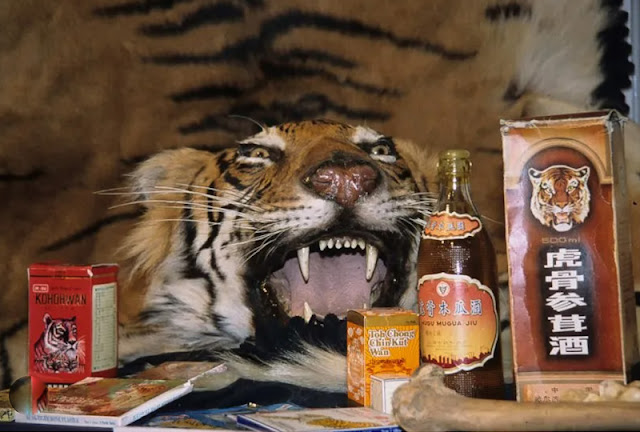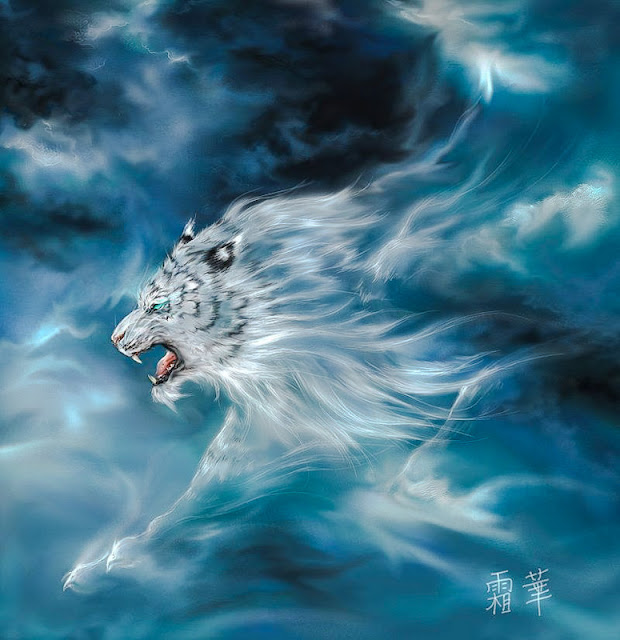Attitudes towards consumption and conservation of tigers in China
This is a highly contentious issue. It has been for a very long time. It affects tiger conservation dramatically. A research study published in 2008 provides us with some information about the attitudes of Chinese people living in China about eating bits of tiger and using Traditional Chinese Medicine (TCM) tiger products and the effect on conservation.
 |
| Traditional Chinese Medicine tiger products which are hugely damaging to tiger conservation. Image: WWF |
The scientists surveyed 1,880 residents from six Chinese cities. In summary the results are as follows:
- 43% had consumed some products that were said to contain tiger parts (this points to the fact that some of these products may not have genuinely contained tiger parts but were sold as containing them)
- 71% of the respondents said they preferred wild products over farmed ones. This means that they believe that eating the body parts of wild tigers was more beneficial to them than eating the body parts of farmed tigers. You properly know that there are hundreds of tiger farms in China to supply demand for Traditional Chinese Medicine and for consumption.
- 88% of the participants in the study understood that it was illegal to buy or sell tiger products.
- 93% agreed that a ban in the trade of tiger parts was necessary to protect wild tigers.
- Generally, urban Chinese people are supportive of tiger conservation.
- There is a big demand for tiger products in China. This seems to beat the desire for conservation.
- There may be many fake products on the market branded as tiger medicine to meet this demand.
- The scientists suggested that the Traditional Chinese Medicine community should think about rebranding products as 'bone-healing medicines' rather than saying that they contain tiger products like tiger bone.
Conclusion: there is a deeply embedded culture that eating tiger products such as tiger bone wine and using products such as tiger plasters which I presume is a conventional plaster for an injury impregnated with some sort of tiger body part. This culture overrides a desire to protect the tiger it appears.
Back in 2018 there was talk about China reversing a ban on tiger products (instigated in 1993) but that was postponed as of 12 November 2018.
However, it appears that the Chinese government left things in an ambivalent state. As I understand it, the legislation in 2018 allows tiger bone and rhino horn to be used in hospitals if the animals were bred in captivity.
The Chinese government in 2018 issued a statement to say that they would control the trade of tiger bones which can only be obtained from farm animals for use in "medical research or in healing."
Conservationists believe that this loophole would provide a cover for the importation of wild tiger body parts which is an illegal trade.
Traditional Chinese Medicine is extensively used tiger body parts for centuries but there is no scientific evidence which supports the belief that it has healing properties or properties which benefit humans when eaten.
The same, by the way, goes for tiger horn which is keratin, the same substance which makes the nails of humans.
 |
| Tiger wine. Image in public domain. |
In 2020 it was believed that there were at least 8,000 tigers in 200 farms in East and Southeast Asia all of which supply the Asian market for the consumption tiger body parts or for use in Traditional Chinese Medicine (TCM).
TCM is deeply embedded in the Chinese culture. It is hugely damaging to tiger conservation particularly Bengal tigers in India, Nepal and Bangladesh and indeed other parts of Asia.
Link to study referred to: https://doi.org/10.1371/journal.pone.0002544




Comments
Post a Comment
Please comment.